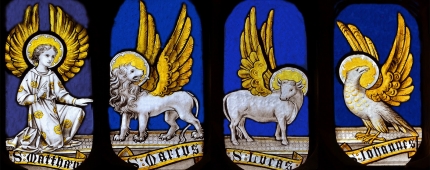Luke 24:44—Was the OT divided by the Jews of Jesus’ day into two or three parts?
Problem: The Jewish Bible is divided into three sections—the Law, the Prophets, and the Writings. Many believe that Jesus is alluding to this threefold division in the phrase “the Law of Moses and the Prophets and the Psalms.” However, the standard NT way of referring to the entire OT by Jesus and the NT writers was by the phrase “the Law and the Prophets” (cf. Matt. 5:17; Luke 24:27). Which is correct?
Solution: The earliest reference to divisions or sections in the OT is twofold—Law and Prophets. This is true during the period of the Jewish exile (6th century _._.), as indicated by Daniel (9:2, 11, 13), and also after the exile (Zech. 1:4; 7:7, 12; cf. Mal. 4:4, 5). References to the OT continued between the OT and NT in the Apocrypha (1 Mac. 4:45; 9:27; 2 Mac. 15:9), as well as in the Qumran community (Manual of Discipline 9.11). Also, as indicated, this is the standard way to refer to the divisions of the OT in the NT (cf. Matt. 5:17; Luke 24:27).
Furthermore, this phrase “Law and Prophets” included the whole OT (all 39 books), since Jesus said it referred to “all the Scriptures” (Luke 24:27). It also includes everything God revealed through prophets up to John the Baptist (Matt. 11:13). Indeed, the emphatic manner in which Jesus referred to not a “jot or tittle” of the OT passing away from the “Law or the Prophets” (Matt. 5:17–18) indicates He is referring to the entire OT.
However, there apparently was an early alternate way of dividing “the Prophets” into two sections which came to be known as Prophets and Writings. The “Prologue of Ecclesiasticus” (ca. 132 b.c.) uses a threefold division, as did the Jewish philosopher Philo (ca. a.d. 40). So did the Jewish historian Josephus (a.d. 37–100) just after Jesus’ time (Against Apion, 1.8), even though he did not place the exact same books in this division as later Jewish groups did. The modern threefold classification into Law, Prophets, and Writings found in today’s Jewish Bibles is derived from the Babylonia Talmud (ca. a.d. 4th cent.). So Jesus’ reference in Luke 24:44 may or may not refer to this threefold division. It is interesting that He did not call the third group “Writings,” but referred only to the Book of “Psalms.” Some believe that He may have singled it out only because of its messianic significance. At any rate, Jesus had just referred to the standard twofold division of Law and Prophets calling it “all the Scriptures” (in Luke 24:27).
See All Problems
This excerpt is from When Critics Ask: A Popular Handbook on Bible Difficulties (Wheaton, Ill.: Victor Books, 1992). © 2014 Norman Geisler and Thomas Howe. All rights reserved. Used by permission. Click here to purchase this book.














